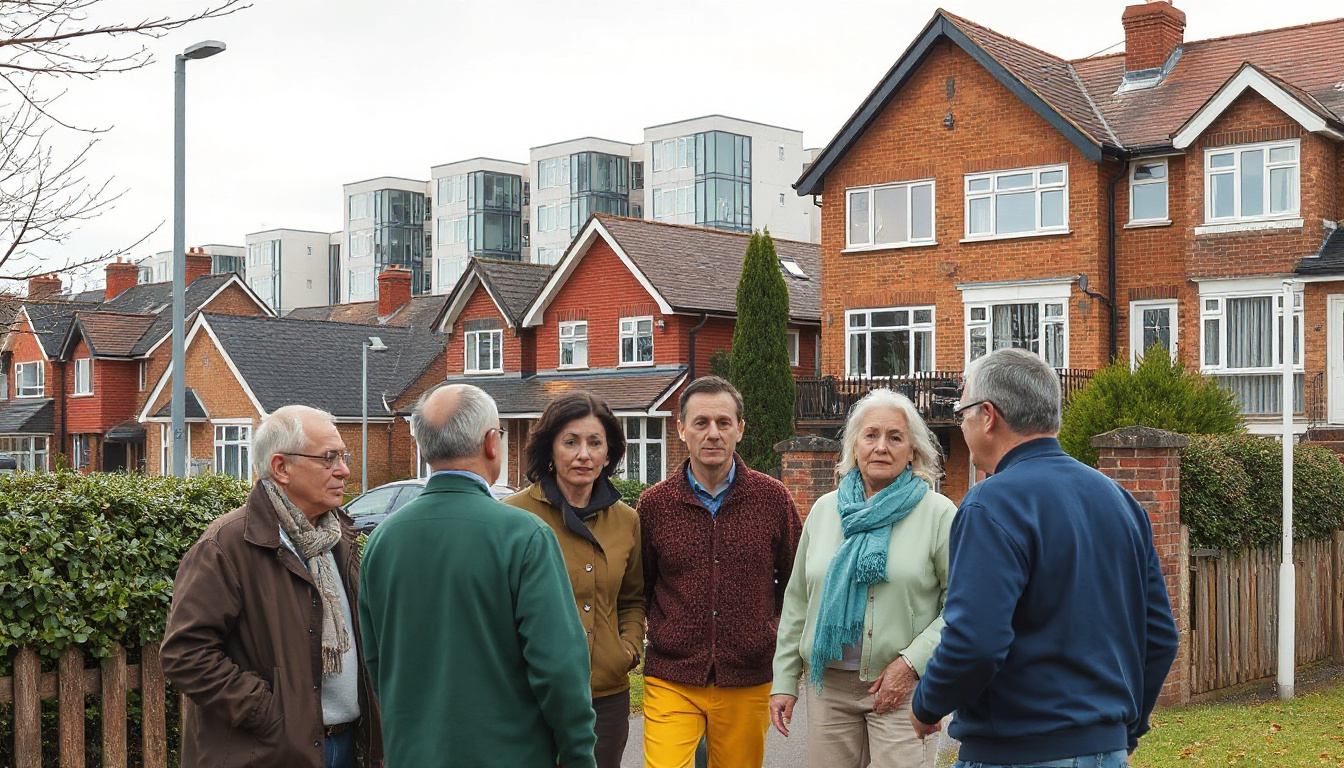Residents Express Concerns Over HMO Developments in Surrey
Residents—whose apprehension binds tightly with the rise of Houses of Multiple Occupation in Surrey—express concern as properties, shifting into shared dwellings, engender tremors in community identity, amplify noise disputes, burden parking availability, and unsettle neighborhood stability.
The HMO Landscape
HMOs, defined as residencies renting to several independent tenants who share fixed amenities, function primarily for students and young professionals necessitating cost-effective dwellings; the burgeoning count of such homes provokes alarm in localities, mirroring disturbances observed in distant boroughs marked by escalated antisocial conduct and deteriorating neighborly affiliations.
A local homeowner, linked by worry to the planned conversion of an adjacent property into a six-occupant dwelling, finds his decision to sell entangled with regulatory gaps; licensing mandates apply strictly to properties with five or more residents, while conversion to homes hosting six or more triggers planning permission, a nuance that enshrouds the approval process in persistent ambiguity.
Community Reactions
Residents, their discontent stemming from local council inertness in the face of rising HMOs, articulate fears that the tightly knit dynamics binding their community may unravel if soon unknown new tenants take residence next door; voices from these quarters, echoing sentiments in areas long scarred by such shifts, signal a future where neighborhoods may lose the identities they once held.
Local authorities, insisting that every license application undergoes rigorous scrutiny, appear, in response, met with calls from residents who demand intransigent measures—protocols akin to those in other regions where similar developments have been stringently controlled.
The Economic Debate
A faction of landlords, linked in argument to the view that strict containment of HMOs may inflict economic strain on the community, assert that such constraints could imperil affordable shared accommodations essential for lower-income residents; this economic contention stands in tension with community fears as fiscal viability collides with the preservation of neighborhood identity.
In an area now indexed with nearly 150 licensed HMOs and a landscape marked by ongoing debates, local council meetings—each a node in the regulatory network—are set to deliberate these matters as the community treads the fine line between sustaining economic activity and maintaining the fabric of local living.
Conclusion
The ascendancy of HMOs in Surrey, which links together issues of housing structure, community cohesiveness, and economic pressures, has set in motion debates that involve resident demands for enforceable constraints and council efforts to mediate between affordable living and preserving neighborhood integrity; the outcomes of these increasingly complex discussions will indelibly shape the future state of local dwellings and the conditions experienced by all who reside therein.



